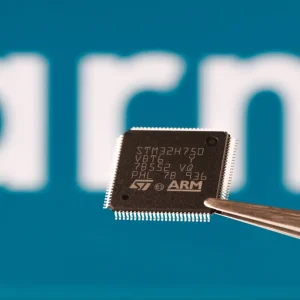Privately held Rotani has taken a simple approach to reducing interference among WiFi access points in close proximity: It divides a single geographic coverage area into two areas, thereby avoiding interference.
Rotani executive VP Nicholas Funke used the analogy of a driver looking into their car’s rear-vision and side mirrors and not seeing another vehicle close to it. That’s what our technology does, it utilizes this blind spot so there is no interference.
The key component of the company’s wireless networking hub, called AirReferee, is that it has two radios attached to two antennas. The system scans its environment and configures the channel assignment for each radio to reduce interference with adjacent wireless networks, whether they are a convention WLAN system or another AirReferee.
AirReferee uses off-the-shelf 802.11x radios and has applied for a patent for its multi-antenna architecture and operation. It runs on a Linux platform and Funke said it could self-configure and self-maintain, which makes it low cost.
The hub reduces interference in existing 802.11x systems and will also do so in upcoming MIMO systems, said the company.
Rotani also promises its product would not reduce performance. We preserve the available throughput on the highest levels, Funke said.
The total coverage area of AirReferee is equivalent to that of a conventional access point or router, but with double the network performance, he added.
Wireless interference has long plagued industry wireless events, where too many access points are often housed in a single conference facility rendering many of them in inoperable or workable but with slow or intermittent connection.
This has also been the case within some business complexes and apartment buildings, and as WiFi becomes more ubiquitous, such interference is expected to become more common. For enterprises, such interference can degrade the ability to web surf and file exchange, for example.
Rotani is not alone in tackling the WiFi interference. Notably, Ruckus Wireless Inc from Kingfisher, Oklahoma, which claims to boost wireless reliability by having a WiFi radio seek out different directions to find a path that is free from interference. Ruckus is aiming its product squarely at the digital-home market.
Rotani claims AirReferee has applications in all WLAN markets, and can reduce noise for IPTV, video on demand, Internet radio, VoIP and connections for media center PCs and TVs.
But the company initially is targeting the wireless IPTV video-over-multicast market because it has highest throughput requirements, Funke said.
IPTV and home digital are our beachhead markets because there are more companies and more potential licensees, he said. In the enterprise market there is only a handful of product companies that are accepted by enterprise vendors, which would have made us too codependent.
But the OEMs that manufacture for the digital home also do so for the enterprise Linksys is a subsidiary of Cisco, for example. Once you get the product out in the digital home, the enterprise market will follow.
The company expects some customers will use AirReferee as is, while other prospective customers, including Cisco, Linksys and Nortel, would add their software on top the platform, Funke said.
AirReferee for IPTV was launched in September 2005, and is currently being trialed by OEMs, which serve heavyweight WLAN hardware makers, Funke said. The company will license its technology rather than be a hardware marker, he noted.
Rotani currently is working with one of the largest OEMs to market AirReferee to its OEM customer base, in Europe, Asia and the US, Funke said.
Rotani launched in 2003 with $2.5m in venture capital. The company would turn its first profit by mid-2007, Funke reckons. In about six months, Rotani will begin its second round of funding, he added. And by the end of the year, it hopes to boost its headcount to 15 workers.






